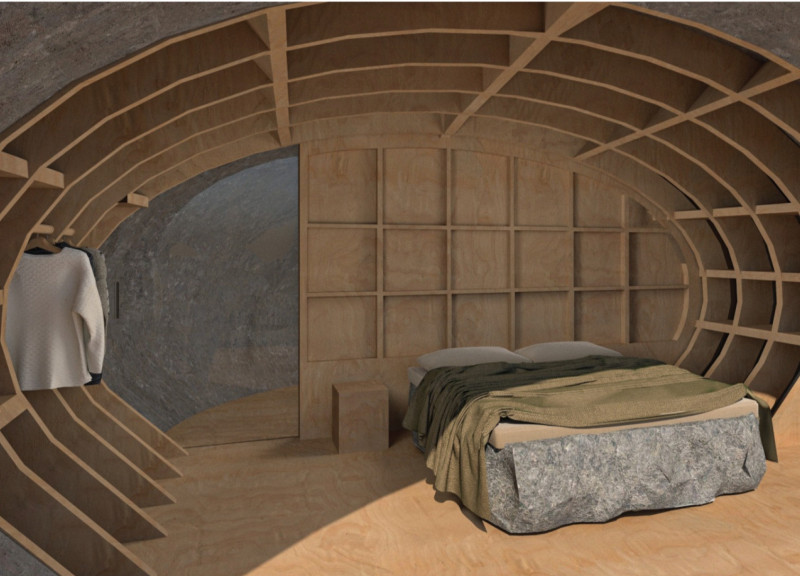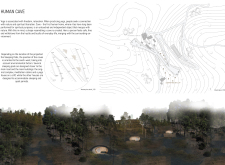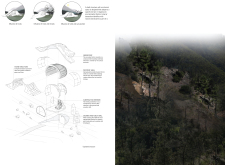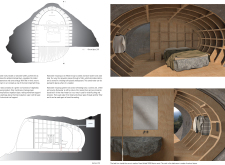5 key facts about this project
Functionally, the "Human Cave" serves as a multipurpose facility designed to facilitate various activities centered around wellness and mindfulness. The core of the project is a series of interconnected spaces, including meditation cabins and sleeping pods, organized within a thoughtful master plan that emphasizes accessibility and movement. Each functional area has been strategically positioned to enhance the user experience, allowing for a natural flow between activities, whether engaging in yoga, resting, or meditating.
The architectural design is characterized by its use of carefully selected materials that align with sustainability principles. Compressed stones and natural wood are prominent in the structure, contributing to both durability and aesthetic appeal. These materials resonate with the project's ethos, fostering a connection to the earth while ensuring the building maintains its structural integrity. The interiors further incorporate natural stone elements, which enhance tactile interaction and emphasize the organic theme of the space.
One of the notable design features is the employment of a green roof system, which not only provides insulation but also integrates vegetation into the building envelope. This unique approach not only enhances environmental performance by managing rainwater sustainably but also creates a calming retreat in which users can engage with nature. The incorporation of hand-felted wool in various interior finishes adds warmth to the environment, making it inviting and conducive to relaxation.
What sets this project apart is its emphasis on creating a seamless relationship between architecture and nature. Every aspect of the design is informed by its surrounding landscape, leveraging natural light and local climatic conditions to create comfortable spaces throughout the year. The careful consideration of orientation allows for optimal solar gain, while also providing sheltered areas that can be used for various activities.
The architectural plans reveal a sophisticated understanding of spatial organization, with an emphasis on minimalist design principles that prioritize functionality without compromising aesthetic quality. The open floor plans of the sleeping pods encourage flexibility, allowing residents to personalize their space. The strategic placement of windows enhances connectivity with the external environment, allowing for an immersive experience with nature that promotes tranquility and introspection.
Overall, the "Human Cave" project is a fine example of contemporary architecture that prioritizes human experience and sustainability. Its unique design strategies and meticulous attention to detail create spaces that encourage personal growth and well-being. For those interested in delving deeper into the architectural design and ideas behind this project, it is recommended to explore the architectural plans, sections, and additional design elements that illustrate the thoughtful approach taken throughout the development. This exploration offers valuable insights into how architecture can effectively support wellness and mindfulness in our daily lives.

























